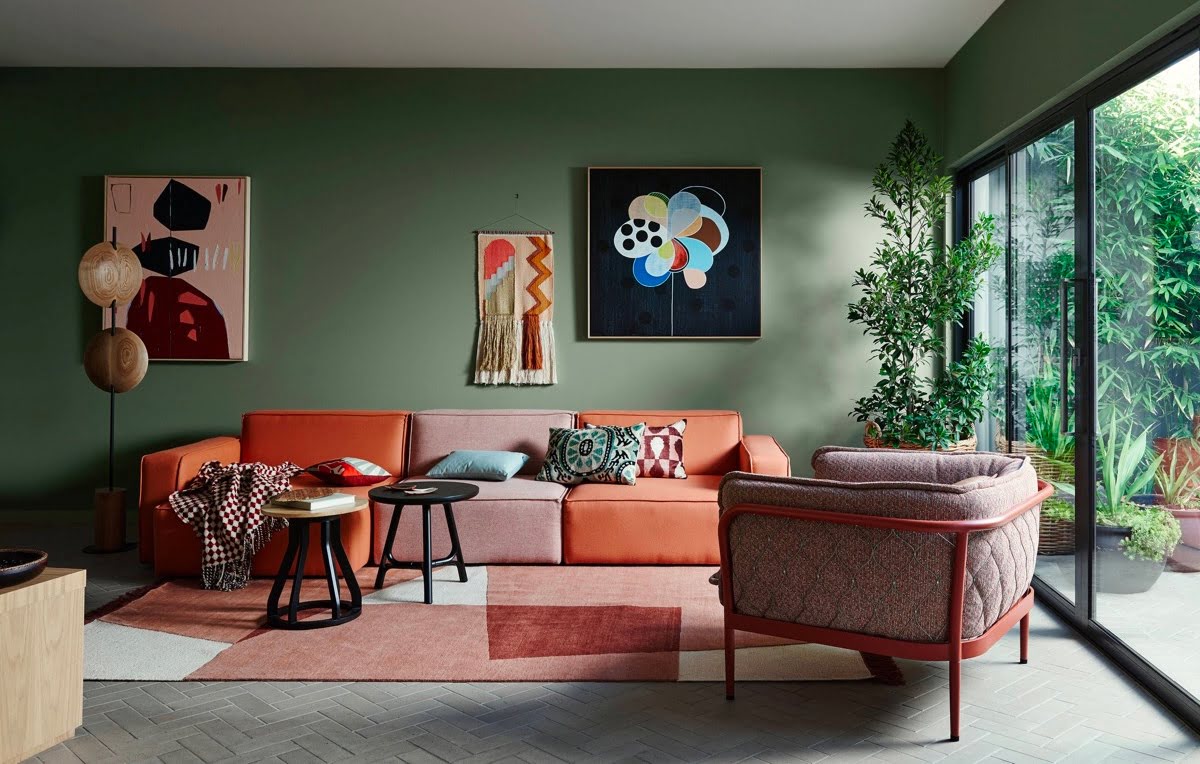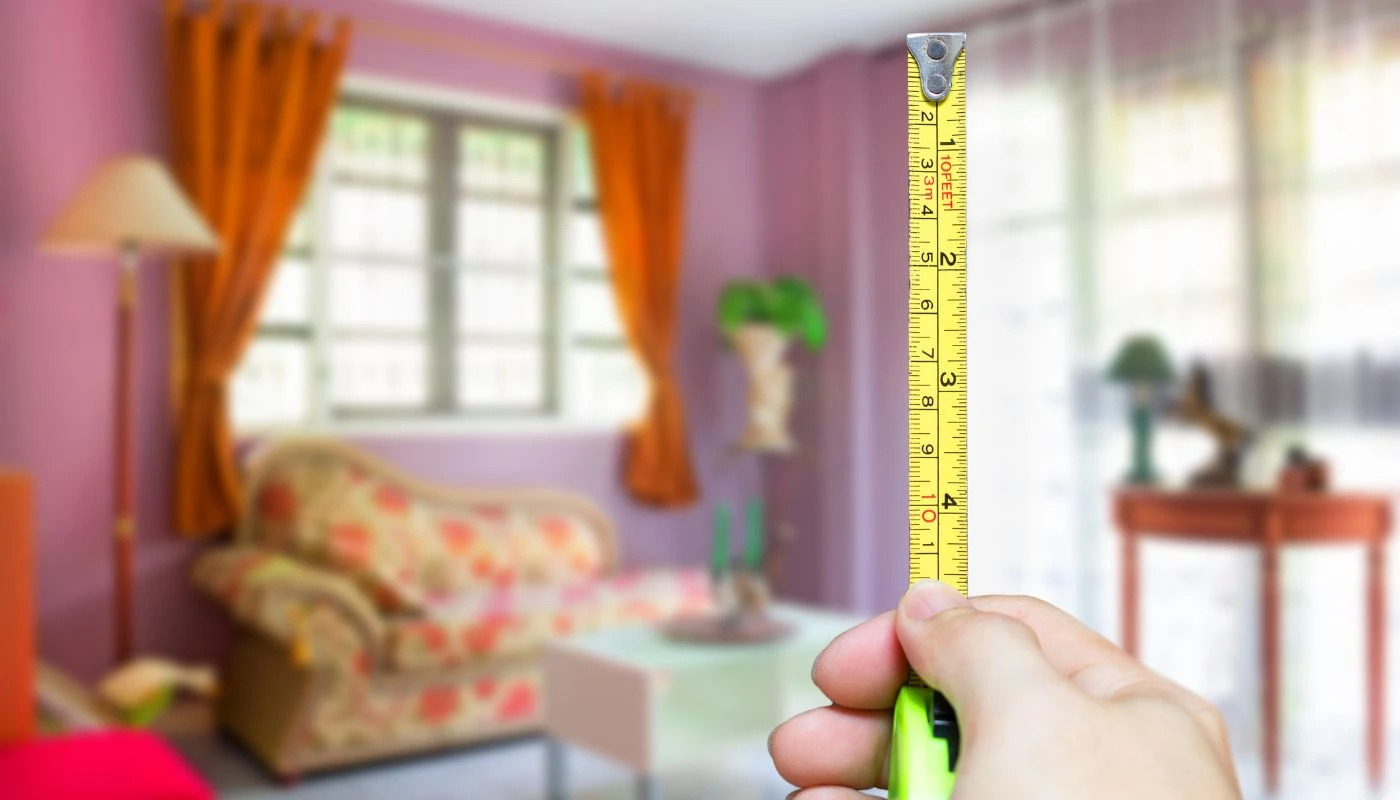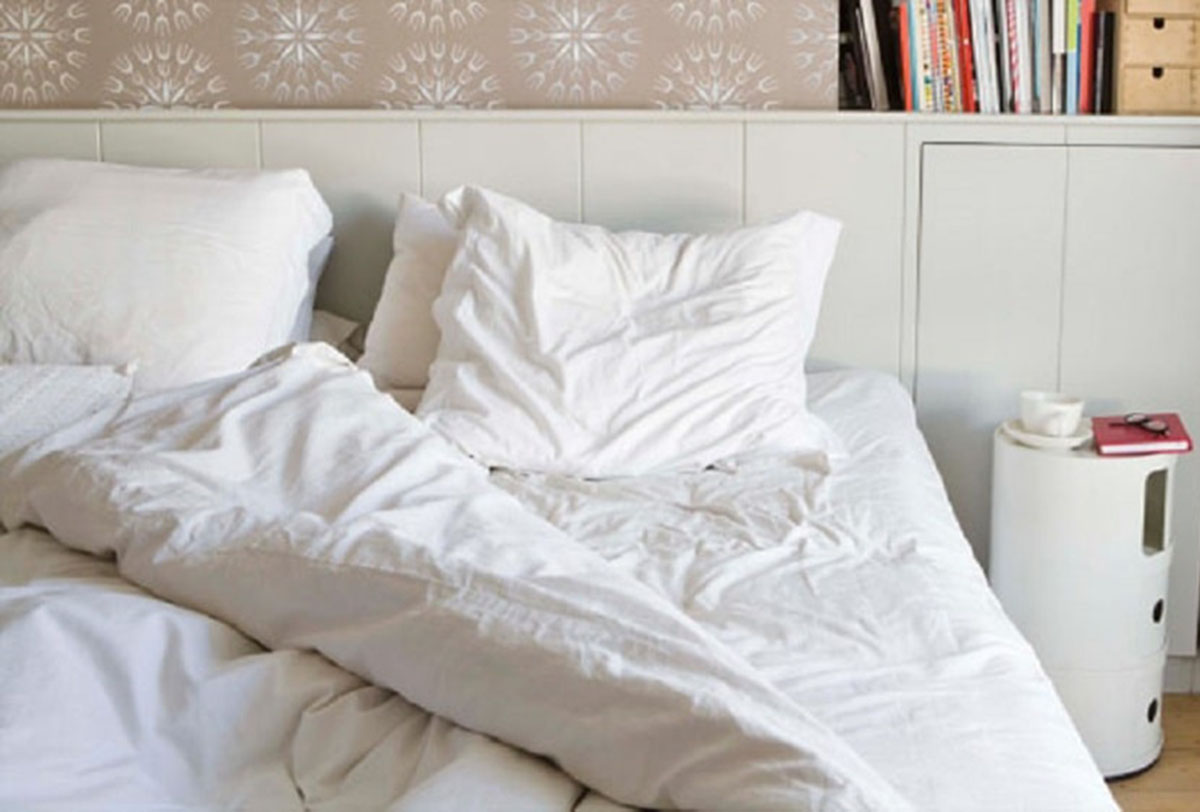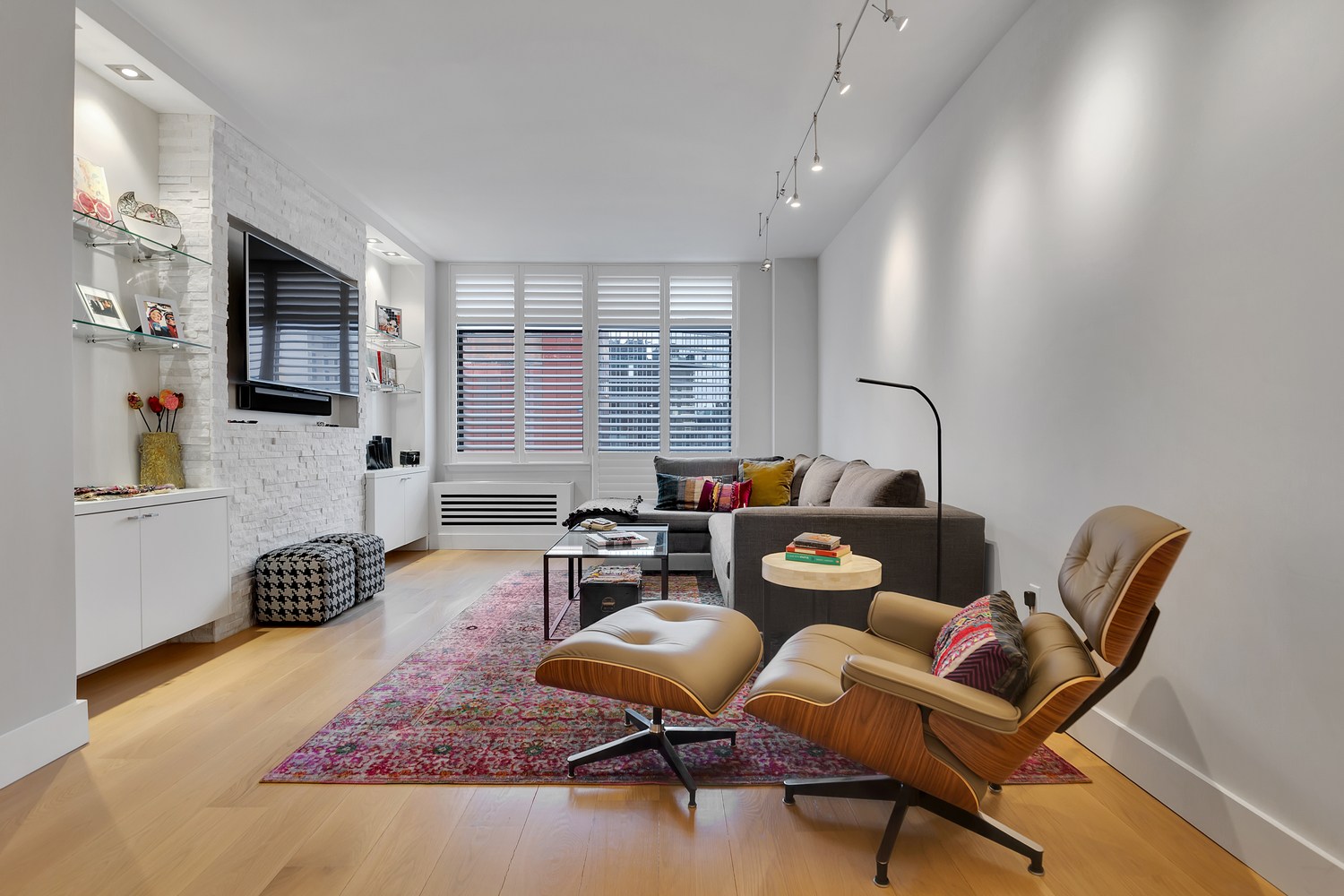

Articles
How To Store Pillows In Living Room
Modified: October 28, 2024
Looking for ways to store pillows in your living room? Check out these helpful articles for creative storage ideas and keep your space tidy and organized.
(Many of the links in this article redirect to a specific reviewed product. Your purchase of these products through affiliate links helps to generate commission for Storables.com, at no extra cost. Learn more)
Introduction
Welcome to the ultimate guide on how to store pillows in the living room! Pillows are an essential element of any cozy living space. They provide comfort, support, and add a touch of style to your room. But when it comes to storing pillows, it’s important to follow certain rules to ensure their longevity and maintain their quality.
In this article, we will explore nine rules for storing pillows in your living room. By following these guidelines, you can keep your pillows fresh, clean, and ready for use whenever you need them. Whether you have decorative throw pillows or functional sleeping pillows, these rules will help you preserve their shape and keep them in pristine condition.
So let’s dive in and discover the best practices for storing pillows in your living room!
Key Takeaways:
- Keep your living room pillows clean, fluffed, and protected from sunlight to maintain their comfort and style. Use pillow covers, avoid storing on the floor, and consider vacuum sealing for efficient storage.
- Regularly rotate and replace your pillows to ensure optimal support and comfort. Store them in a dry place away from pets, and follow care instructions for cleaning and maintenance.
Read more: The Pillow Colors To Avoid In A Living Room
Rule #1: Keep it Clean
The first rule of storing pillows in the living room is to keep them clean. Regular cleaning is essential to maintain the hygiene and freshness of your pillows. Over time, pillows can accumulate dirt, sweat, oils, and dust mites, which can affect their quality and cause allergies.
To clean your pillows, start by checking the care instructions provided by the manufacturer. Most pillows can be machine washed, but some may require more delicate care. Use a gentle detergent and follow the recommended water temperature for optimal cleaning.
Before washing, it’s a good idea to check for any stains or spots. Spot treat them with a mild stain remover or a mixture of water and baking soda before laundering. This will help ensure that your pillows come out looking and smelling fresh.
When it comes to drying, avoid using high heat as it can damage the filling materials of the pillows. Instead, opt for a low or medium heat setting and consider adding a couple of tennis balls or dryer balls to help fluff and distribute the filling evenly.
It’s also important to note that some pillows, such as memory foam or latex pillows, may not be suitable for machine washing. In such cases, spot cleaning with mild soap and water or using a vacuum cleaner attachment to remove dirt and debris can be an effective alternative.
By keeping your pillows clean, you’ll not only enhance their longevity but also ensure a healthier and more comfortable living space.
Rule #2: Avoid Direct Sunlight
When it comes to storing pillows in your living room, it’s crucial to avoid exposing them to direct sunlight. Sunlight can cause fading and discoloration, especially for pillows made from natural fabrics or those with vibrant colors or patterns.
Direct sunlight can be particularly damaging to pillows filled with feathers or down. The heat from the sun can cause the filling to break down and lose its fluffiness over time. Additionally, UV rays can weaken the fabric and lead to deterioration.
To protect your pillows from sunlight, it’s best to position them away from windows or use curtains, blinds, or shades to block out the direct rays. If you have decorative pillows on your couch or chairs, consider rotating them periodically to ensure even sun exposure on all sides.
Avoiding direct sunlight not only helps preserve the aesthetics of your pillows but also extends their lifespan. So make sure to find a shady spot for them in your living room and shield them from the harmful effects of the sun.
Rule #3: Fluff Regularly
Fluffing your pillows regularly is an important step in maintaining their shape and ensuring optimal comfort. Over time, pillows tend to flatten out and lose their loftiness due to the weight of our heads and bodies. Fluffing helps re-distribute the filling and restore the pillow’s original shape.
To fluff your pillows, start by giving them a good shake. Hold the corners of the pillow and vigorously shake it up and down to loosen the filling. This helps to plump up the pillow and restore its volume.
Next, gently knead the pillow to even out the filling. Squeeze and release the pillow in various areas to distribute the filling evenly. This will prevent lumps or clumps from forming and ensure consistent support throughout the pillow.
Another effective way to fluff your pillows is by using a vacuum cleaner with a soft brush attachment. Run the brush over the surface of the pillow to lift the fibers and give it a fresher appearance. Be careful not to press too hard or use a high suction setting, as it can damage the filling or fabric.
Make it a habit to fluff your pillows every few days or whenever they start to feel flat. This simple step will help maintain their shape, prolong their lifespan, and ensure a comfortable and supportive experience every time you use them.
Rule #4: Use Pillow Covers
Using pillow covers is essential for protecting your pillows from dirt, stains, and allergens. Pillow covers act as a barrier between the pillow and external elements, keeping them clean and fresh for longer periods.
When choosing pillow covers, opt for removable and machine-washable options. This makes it easier to clean and maintain your pillows regularly. Pillow covers come in various materials, including cotton, polyester, and microfiber. Select a fabric that is soft, breathable, and hypoallergenic to ensure maximum comfort.
Pillow covers also add an extra layer of style and versatility to your living room decor. You can choose covers in different colors, patterns, and textures to match your overall aesthetic and change them according to your mood or season.
Additionally, pillow covers provide an added benefit for those who suffer from allergies. They act as a barrier against dust mites, pollen, and other allergens that can accumulate on the surface of the pillow. This helps create a healthier environment for you and your family.
Remember to wash your pillow covers regularly, following the care instructions provided by the manufacturer. This will help maintain their cleanliness and ensure that your pillows stay fresh and protected.
By using pillow covers, you can prolong the life of your pillows, keep them clean, and enhance the overall aesthetic of your living room.
Read more: How To Store Toys In Living Room
Rule #5: Store in a Dry Place
One of the most important rules for storing pillows in your living room is to keep them in a dry environment. Moisture can lead to mold, mildew, and unpleasant odors, which can ruin the quality and cleanliness of your pillows.
Avoid storing your pillows in damp or humid areas such as basements, bathrooms, or near leaky windows. These areas are prone to moisture buildup, which can seep into your pillows and create the perfect breeding ground for mold and mildew.
Instead, find a dry place in your living room to store your pillows. Ideally, choose a well-ventilated area with good air circulation. This helps prevent the buildup of humidity and keeps your pillows fresh and dry.
If you live in a particularly humid climate, you might consider using dehumidifiers or moisture-absorbing products in your living room. These can help reduce excess moisture in the air and provide a drier environment for your pillows.
Remember to periodically check for signs of moisture, such as a musty smell or visible mold/mildew. If you notice any, it’s crucial to address the issue immediately. Remove the affected pillows, clean them thoroughly, and ensure the storage area is properly ventilated.
By storing your pillows in a dry place, you can prevent moisture-related issues and maintain the freshness and quality of your pillows for years to come.
To store pillows in the living room, consider using decorative baskets or bins to keep them organized and easily accessible. This will also help to keep the living room looking tidy and stylish.
Rule #6: Avoid Storing on the Floor
When it comes to storing pillows in your living room, it’s best to avoid keeping them directly on the floor. While it may be tempting to toss them on the ground for easy access, storing pillows on the floor can expose them to dirt, dust, and potential damage.
The floor is a high-traffic area where dirt, allergens, and bacteria can accumulate. Placing your pillows on the floor increases the risk of them picking up these contaminants, which can in turn affect their cleanliness and overall quality.
In addition to dirt and dust, storing pillows on the floor can expose them to accidental spills, pet hair, and other potential hazards. Pets may deem your pillows as their favorite resting spot or even mistake them for chew toys, leading to damage.
To avoid these issues, consider using a designated storage space for your pillows. You can invest in stylish storage bins, baskets, or shelves, specifically designed to hold pillows. These options provide a clean and organized solution for keeping your pillows off the floor.
If space is limited in your living room, you can also utilize furniture with built-in storage compartments. This allows you to keep your pillows conveniently tucked away when not in use, while still maintaining a clutter-free environment.
By avoiding storing your pillows on the floor, you can protect them from dirt, damage, and potential hazards, ensuring they remain fresh and in optimal condition for longer.
Rule #7: Consider Vacuum Sealing
When it comes to storing pillows in your living room, one option to maximize space and protect them from dust and dirt is to consider vacuum sealing. Vacuum sealing involves using a vacuum cleaner and special storage bags to remove air and compress the pillows, creating a more compact and airtight package.
Vacuum sealing is particularly useful if you have limited storage space or if you need to store pillows for an extended period. It helps reduce the volume of the pillows, allowing you to stack and store them more efficiently.
To vacuum seal your pillows, start by placing them in appropriate-sized storage bags. These bags are usually made of durable, airtight material that provides protection against moisture, dust, and pests.
Once your pillows are inside the bags, use a vacuum cleaner with a hose attachment to remove the air from the bags. The vacuum cleaner will suck out the air, compressing the pillows and creating a tight seal. This process significantly reduces the size of the pillows, making them easier to store without sacrificing their quality.
It’s important to follow the manufacturer’s instructions when using vacuum-sealed storage bags. Avoid overstuffing the bags, as this may cause them to burst or lose their airtight seal.
When you’re ready to use your vacuum-sealed pillows, simply open the bag and allow them to expand. Give them a gentle shake and fluff to restore their original shape and loftiness.
While vacuum sealing can be a convenient storage solution, it’s important to note that some pillow types, particularly those made of natural materials like feathers or down, may not compress as easily as others. It’s best to consider the type and construction of your pillows before deciding to vacuum seal them.
By considering vacuum sealing, you can efficiently store your pillows, save space in your living room, and protect them from dust and dirt until you’re ready to use them again.
Rule #8: Store Away from Pets
When it comes to storing pillows in your living room, it’s important to keep them away from pets. While our furry friends provide love and companionship, they can also be prone to scratching, chewing, or shedding, which can damage or soil your pillows.
Pets, especially dogs and cats, may view pillows as a tempting chew toy or a cozy spot to curl up on. Their sharp claws and teeth can easily puncture or tear the fabric, leading to irreparable damage. Additionally, pet hair, dander, and saliva can accumulate on the pillows, causing allergies and odors.
To ensure the safety and cleanliness of your pillows, store them in an area that is inaccessible to your pets. Use closed storage systems, such as cabinets or closets, to keep the pillows out of their reach. If you have decorative pillows on your couch or chairs, consider using slipcovers or protective barriers to prevent your pets from coming into direct contact with them.
In addition to storing pillows securely, it’s also important to regularly clean and groom your pets. Brushing and bathing them frequently can help reduce shedding and minimize the transfer of dirt and allergens to your pillows.
If your pets have a tendency to jump on furniture, consider training them to stay off the couch or designate a separate pet-friendly area in your living room where they can have their own comfortable bedding.
By keeping your pillows away from pets, you can prevent damage, maintain their cleanliness, and ensure a fresh and hygienic environment for both you and your furry companions.
Read more: How To Store Children’s Toys In Living Room
Rule #9: Rotate and Replace
The final rule for storing pillows in your living room is to regularly rotate and replace them. Over time, pillows can experience wear and tear, lose their shape, and become less supportive. By rotating and replacing your pillows, you can ensure that they remain comfortable and provide optimal support.
Start by rotating your pillows every few months. This means swapping the pillows from one side of the couch or chair to the other. By doing so, you distribute the weight and pressure evenly, preventing uneven compression and maintaining the pillows’ shape.
In addition to rotation, it’s important to periodically assess the condition of your pillows. Over time, pillows can lose their fluffiness and supportiveness. Look out for signs such as lumps, flat spots, or a significant decrease in loft. If you notice these signs, it may be time to replace your pillows.
How often you need to replace your pillows depends on several factors, such as the quality of the pillows, the frequency of use, and personal preference. On average, pillows should be replaced every 1 to 2 years. However, if you have specific health conditions or allergies, you may need to replace them more frequently.
When replacing your pillows, invest in high-quality options that suit your sleeping or seating preferences. Consider the type of pillow fill (down, feathers, memory foam, etc.), firmness level, and any specific features that align with your needs.
Remember, not all pillows are created equal, and finding the right fit plays a crucial role in your comfort and support. Take the time to research and test different options to ensure a good night’s sleep or a cozy spot on your couch.
By regularly rotating and replacing your pillows, you can prolong their lifespan, maintain their comfort and support, and ensure a fresh and inviting living room environment.
Conclusion
Storing pillows in your living room may seem like a simple task, but following these nine rules will help ensure their longevity, cleanliness, and comfort. By keeping your pillows clean, avoiding direct sunlight, and regularly fluffing them, you can maintain their shape and quality.
Using pillow covers will protect them from dirt and allergens, while storing them in a dry place away from pets and off the floor will prevent damage and maintain their freshness. Consider vacuum sealing to save space and store them more efficiently.
Lastly, remember to rotate and replace your pillows as needed to maintain their support and comfort. By following these rules, you can enjoy a cozy and inviting living room with pillows that are always ready for you to relax and unwind.
So, take the time to care for your pillows, and they will continue to provide you with comfort and style, making your living room a place of relaxation and beauty for years to come.
Frequently Asked Questions about How To Store Pillows In Living Room
Was this page helpful?
At Storables.com, we guarantee accurate and reliable information. Our content, validated by Expert Board Contributors, is crafted following stringent Editorial Policies. We're committed to providing you with well-researched, expert-backed insights for all your informational needs.














0 thoughts on “How To Store Pillows In Living Room”